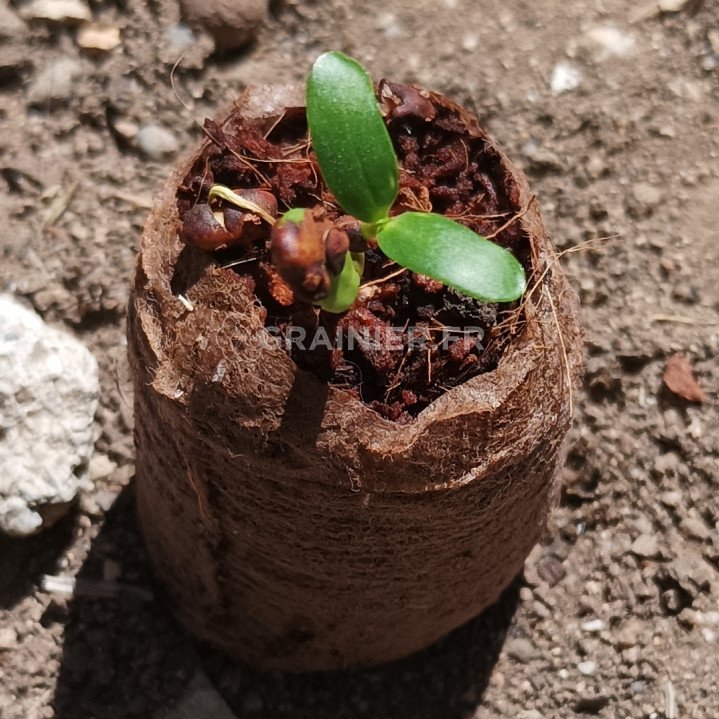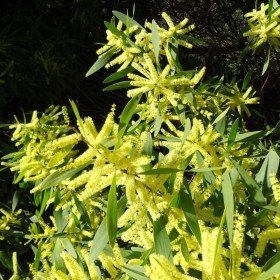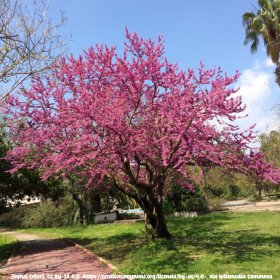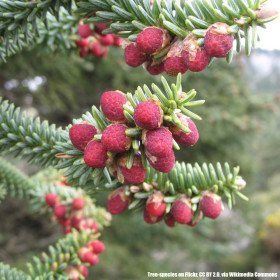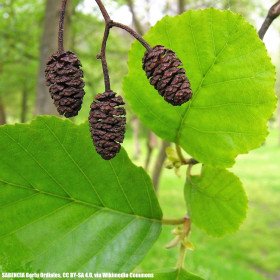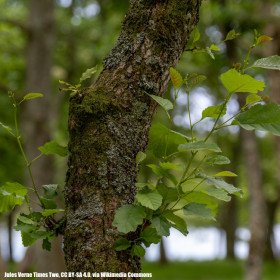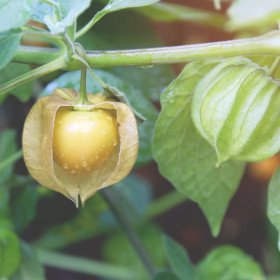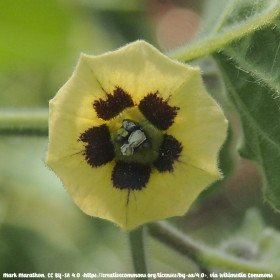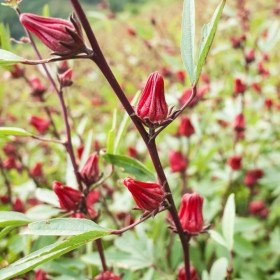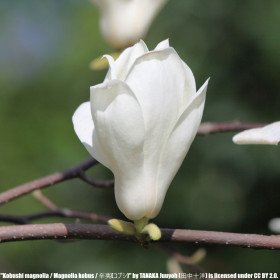5 Graines Flamboyant d'Hyères, Sesbania punicea
5 Graines Flamboyant d'Hyères, Sesbania punicea
- Modèle : 5 Graines Flamboyant d'Hyères, Sesbania punicea
- Disponibilité : INDISPONIBLE
- 1,50€
Me contacter dès que le produit est disponible
Flamboyant d'Hyères, Sesbania punicea |
Sesbania punicea (Flamboyant d'Hyeres, ou sesban écarlate) est un arbuste décoratif de 2 à 3m qui produit des fleurs de couleur rouge-orangé, à feuilles caduques. C'est une plante qui a besoin de beaucoup d'eau, elle se développe dans des marais ou des endroits humides. Elle préfère également un sol légèrement acide, d'un PH entre 6.1 et 6.52,3.
5 graines - Germination moyenne : 70%
Cette espèce est originaire du Brésil, d'Argentine, du Paraguay et d'Uruguay. Il s'est propagé à des parties de l'Afrique, d'autres parties de l'Amérique du Sud, et de nombreuses étendues côtière du sud des États-unis. En raison de son fort besoin en l'eau, cette espèce adopte le plus souvent des rives marécageuses. Elle peut former également des fourrés denses et prospère dans les zones perturbées4.
Cet arbuste a des feuilles caduques qui sont alternes et composées avec entre 5 et 20 paires de folioles elliptiques. Les bords des feuilles sont généralement entiers, avec peu ou pas de dentelure. Chaque foliole est de forme oblongue et se termine par un bout pointu. Les feuilles contiennent des stipules généralement discrètes. Ces plantes produisent à la fois des fruits et des fleurs de manière tombante à l'extrémité des tiges. Les branches de cet arbuste sont plutôt minces, et sont à l'origine vertes, mais virent au brun rouge foncé lorsqu'elles arrivent à maturité. L'écorce varie d'un brun gris à un brun rouge avec des lenticelles horizontales évidentes8,9.
Les fleurs ressemblent à des fleurs de pois, de 2–3 cm de long, et sont souvent d'un rouge-orangé ou rouge-pourpre. Ces fleurs sont souvent trouvées de manière racémique. Caractéristique de la famille des Fabacées, cette espèce a cinq sépales soudées et cinq pétales libres. La fleur contient toujours 10 étamines, parfois avec diverses combinaisons de filets fusionnés. L'ovaire est supère et le style est souvent courbé. Caractéristique de la sous-famille des Faboideae, ces fleurs sont zygomorphes et ont une structure spécialisée. Le pétale supérieur est appelé la bannière, et encapsule les pétales quand ils sont dans le bourgeon. Les deux pétales adjacentes , appelé les ailes, le chevauchement de la partie inférieure de deux pétales. Le bas des pétales sont souvent fusionnés à l'apex, formant une structure appelée la quille. Les fleurs apparaissent souvent bizarres et « voyantes » parce qu'elles sont le plus souvent pollinisées par des insectes, l'utilisation de ces tactiques est simplement un appel aux pollinisateurs.
Les fruits sont de grosses gousses, genre petits pois, compartimentées en quatre et apparaissent comme si elles avaient légèrement rétréci à cause du séchage. Ces fruits sont déhiscents et sèchent à mesure qu'ils mûrissent. Chaque fruit peut contenir entre cinq et dix graines, qui ne sont dispersées que lorsque la cosse sèche et s'ouvre. Le nombre de gousses trouvées sur une seule plante dépend de l'âge et des conditions de croissance de la plante. En moyenne, une seule plante peut produire 100 à 300 gousses. Lorsque les gousses émergent sur les plantes et ne sont pas encore complètement matures, elles sont de couleur jaune ou verte. Au fur et à mesure que la saison progresse, ces gousses deviennent d'un vert plus foncé, devenant éventuellement brun foncé. Ces graines restent souvent sur la plante pendant l'hiver, et les graines à l'intérieur créent un bruit de cliquetis distinct lorsqu'elles sont secouées par le vent, ce qui donne à la plante son nom commun de «hochet»10,11
Photo N°2 :
Contenu soumis à la licence CC-BY-SA 3.0. Source : Article Sesbania punicea de Wikipédia en français (auteurs)
Etiquettes : flamboyant, hyeres, sesbania, punicea, GRAINES DE FLEURS & ARBRES Flamboyant d'Hyères, Sesbania punicea, Exotiques & Rares Flamboyant d'Hyères, Sesbania punicea, Arbustes & plantes grimpantes Flamboyant d'Hyères, Sesbania punicea, Arbres & Bonsaï Flamboyant d'Hyères, Sesbania punicea, Flamboyant d'Hyères, Sesbania punicea GRAINES DE FLEURS & ARBRES, Flamboyant d'Hyères, Sesbania punicea Exotiques & Rares, Flamboyant d'Hyères, Sesbania punicea Arbustes & plantes grimpantes, Flamboyant d'Hyères, Sesbania punicea Arbres & Bonsaï




